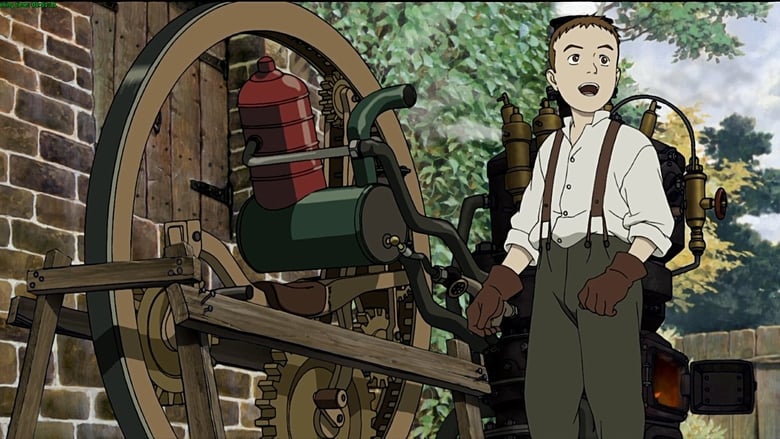
In the States, around 15 minutes was trimmed from the climax to help bring down the film’s slightly unwieldy 126 minutes. Indeed the non-stop mayhem of the extended climax (underscored with a magnificent, pounding soundtrack from Steve Jablonsky) which takes up much of the final act, taking in an armoured attack on the Great Exhibition at Crystal Palace, the activation of the monstrous Steam Castle and its rampages through the capital might prove a bit too much for some, often verging on complete overkill. With is city-menacing battles, flying superheroes and technologically advanced weaponry one can’t help but wonder if this was the film that most of the Marvel Cinematic Universe movies desperately want to be.

Add to that the gorgeous production design (every frame is packed with detail and texture), the animation is the equal of anything being produced by the standard-setting Studio Ghibli at the time and the action set-pieces are as frantic, noisy and exciting as you could wish for. The story for Steamboy may not be as absorbing, provocative or cerebral as that for Akira – indeed at times it skates dangerously close to being quite trite – but it’s very simplicity and directness is hard to resist. During the mayhem, Ray discovers a steam-powered jetpack that allows him to become a proto-superhero. After many scrapes, double-crosses and mayhem that involves O’Hara and Stephenson vying for control of the “steam ball” technology, each side planning to use it for military purposes, three generations of Steams have to work together to prevent the out-of-control steam palace from destroying London. He meets Scarlett O’Hara (Manami Konishi/Kari Wahlgren), the young granddaughter of the Foundation’s chairman and is astonished to find that his father, now a cyborg with metallic limbs and implants, is still alive and working for O’Hara on the development of an elaborate Steam Castle. But after a daring race against an O’Hara steam train, Reay is captured and taken to London where the 1866 Great Exhibition is about to open. Ray is saved by Lloyd who appears from nowhere and creates a distraction, allowing his grandson to make a getaway, under instruction to deliver the device to the famous inventor Robert Stephenson (Kiyoshi Kodama/Oliver Cotton).

The prototype and its plans are sent to Edward’s young son Ray (Anne Suzuki/Anna Paquin) Steam who lives in Manchester, England where it almost falls into the clutches of The O’Hara Foundation, a vaguely sinister American company.

But an experiment goes horribly wrong, resulting in Edward being trapped in freezing gas, though his sacrifice leads to the development of a powerful “steam ball”. In the 1860s, scientist Lloyd Steam (voiced by Katsuo Nakamura in the original Japanese and by Patrick Stewart in the very good English dub) and his son Edward (Masane Tsukayama/Alfred Molina) have uncovered a supply of pure mineral water in Iceland which they believe can be used to power the huge steam technologies that dominate Europe. When Steamboy was finally released in 2004, it proved to be another gorgeously designed and action-packed science fiction epic, one that took its cues, as its title suggests, from steampunk rather than the cyberpunk of Akira. But he also spent the better part of a decade preparing his follow-up anime feature.

In the decade and a half following Akira, Otomo made the live action horror film Wārudo apātomento horā/World Apartment Horror (1991), a segment of the animated anthology Memorîzu/Memories (1995) and the short film Gundam: Mission to the Rise (1998). Some long-time fans of anime were resentful of the film’s success overshadowing the rich history of Japanese animation that had come before it, but there’s denying that its success opened the door for a new breed of anime fandom. In 1987, the global success of Katsuhiro Otomo’s Akira sparked a huge interest in Japanese animation in the west.


 0 kommentar(er)
0 kommentar(er)
